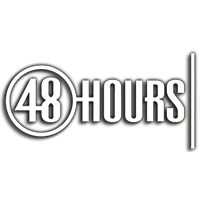What Is Rapid Opiate Detox?
Rapid opiate detox, sometimes known as rapid opioid detox or simply opioid detox, is an advanced medical procedure designed to help individuals safely withdraw from opioid drugs including prescription medications and heroin in a much shorter timeframe than traditional detox protocols. Unlike self-managed or outpatient detox, rapid opiate detox is performed in a medical setting under strict clinical supervision, utilizing sedation or anesthesia to help patients move through acute withdrawal with controlled support.
How Does Rapid Opioid Detox Work?
During rapid opioid detox, a patient receives medications that block opioid receptors, prompting withdrawal symptoms while sedated in a hospital environment. Medical staff carefully monitor vital signs and manage symptoms, often using drugs like naltrexone to accelerate the removal of opioids from the brain’s receptors. This sedation-assisted process, when conducted correctly may allow patients to bypass the worst of conscious withdrawal, reduce the risk of early relapse, and transition more quickly to naltrexone or Vivitrol maintenance if medically appropriate.
Physical Dependence vs. Addiction: Why Rapid Opioid Detox Is Not a Total Solution
Opioid Physical Dependence
Physical dependence on opioids is a natural, predictable adaptation of the body to repeated exposure to these drugs. Over time, the body becomes reliant on an external source of opioids to maintain normal physiological functions. When opioid use is stopped suddenly, withdrawal symptoms appear—such as muscle pain, chills, nausea, restlessness, and severe cravings. Physical dependence is not unique to opioids; many other substances (like caffeine or antidepressants) can also cause dependence with regular use.
Key facts:
- Physical dependence happens in almost everyone taking opioids for an extended period.
- It is characterized by tolerance (needing more of the drug for the same effect) and withdrawal symptoms if the drug is stopped or the dose is lowered.
- Dependence is a physiological state, not a behavioral or moral issue.
Opioid Addiction (Opioid Use Disorder)
Addiction, medically called Opioid Use Disorder (OUD), is a condition marked by compulsive drug-seeking and use, despite harmful consequences. With addiction, the brain’s reward, motivation, and memory circuits are affected, driving uncontrollable cravings and prioritizing drug use over healthy behaviors.
Key facts:
- Addiction involves behavioral patterns: compulsive use, inability to control use, craving, and continued use despite harm.
- Not everyone who is physically dependent on opioids develops addiction—addiction requires a specific set of behavioral symptoms.
- Addiction treatment requires comprehensive approaches, including behavioral therapy, counseling, and long-term ongoing support.
What Does Rapid Opioid Detox Actually Do?
Rapid opioid detox (or rapid opiate detox under anesthesia) is a medical procedure focused on eliminating physical opioid dependence. It rapidly removes opioids from the body, reverses tolerance, and eradicates the cycle of physical craving and withdrawal. For many individuals, this “silver bullet” addresses a tremendous barrier to getting off opioids, but it is not a cure for addiction itself.
Critical distinction:
Rapid opioid detox is highly effective for reversing physical dependence and enabling patients to break free from the immediate physiological grips of opioid drugs.
However, lasting recovery from opioid addiction requires addressing the behavioral aspects, such as compulsive drug-seeking, emotional triggers, and maladaptive habits—that detox alone cannot cure.
Why Treatment Must Address Both
While rapid detox can give patients a “fresh start” free from opioid withdrawal and dependence, it does not resolve the years of behavioral, emotional, and psychological problems that come with addiction. These issues require separate, structured behavioral health interventions including therapy, support groups, and relapse prevention programs.
Understanding Opioid Dependence and Withdrawal
Opioid dependence develops when prolonged opioid use disrupts the brain’s normal chemical balance, particularly affecting neurotransmitters like dopamine, norepinephrine, and serotonin. Stopping opioids suddenly can trigger severe withdrawal—symptoms may include:
- Intense muscle and bone pain
- Severe gastrointestinal distress
- Mood swings, depression, anxiety
- Rapid heartbeat and fever
- Insomnia and restlessness
Rapid opiate detox is designed to compress this process, providing intensive monitoring and tailored medical interventions to safeguard health and comfort.
Medically Important Considerations: Safety, Risks, Benefits
Proven Medical Benefits
- Accelerated transition through physical withdrawal, reducing the most agonizing stage from days or weeks to mere hours in some cases.
- Supervised, hospital-based monitoring of heart rate, breathing, electrolyte balance, and pain, substantially decreasing the risks associated with unsupervised detox.
- Faster initiation of anti-craving medication (e.g., naltrexone) post-detox, a potential advantage in relapse prevention.
Critical Safety Factors
- The procedure must be conducted in a full-service, accredited hospital by a board-certified physician with significant experience in anesthesia-assisted opioid detox.
- Detailed pre-admission medical screening is essential to uncover underlying health issues or contraindications.
- Not all patients are good candidates for rapid detox; exclusion criteria may include severe co-occurring cardiopulmonary or psychiatric conditions.
Risks and Complications
- Rare but serious risks include adverse reactions to anesthesia, cardiac events, and complications from rapid opioid displacement from brain receptors.
- Rapid opiate detox is not a “quick fix” for addiction; rather, it is a highly technical medical procedure best reserved for select patients after careful evaluation.
Rapid Opiate Detox vs. Traditional Opioid Detox: Comparison Table
| Feature | Rapid Opiate Detox | Traditional Opioid Detox |
|---|---|---|
| Setting | Medical/hospital, sedation or anesthesia | Outpatient, home, or inpatient non-hospital |
| Duration of Acute Withdrawal | Hours to 1–2 days | 7–10 days or longer |
| Craving Blocker Initiation | May begin naltrexone/Vivitrol almost immediately | Must wait until full withdrawal completion |
| Supervision Level | Continuous, multidisciplinary medical monitoring | Varies, often periodic or self-managed |
| Physical Discomfort | Managed under sedation | Experienced fully, sometimes intense |
| Suitability | Limited; not suitable for all | Broadly applicable |
| Post-Detox Aftercare | Strongly recommended, emotional, psychological, social | Essential, but less structured in some settings |
The Science and Controversy: Modern Evidence and Critiques
Rapid opiate detox remains a subject of clinical interest and debate. Published literature acknowledges its effectiveness for highly motivated, well-screened individuals, but experts stress the critical importance of hospital-based protocols and individualized care. Critics warn against clinics promoting “overnight cures”, true medical opioid detoxification prioritizes patient safety over marketing claims.
Rapid Opioid Detox: Frequently Asked Questions
Is Rapid Opiate Detox Right for Everyone?
No. Candidacy depends on full medical evaluation. Individuals with significant health issues such as heart disease or unstable psychiatric conditions may face heightened risks.
Is Rapid Opioid Detox a Cure for Addiction?
No. Detox is only the first stage in overcoming opioid use disorder. Long-term success requires behavioral therapy, psychological support, and relapse prevention strategies.
What Happens After Rapid Opiate Detox?
Optimal programs provide post-detox recovery support, medical stabilization, psychological assessment, and referrals for ongoing care and counseling are essential for preventing relapses and supporting sustained recovery.
Industry Example: Waismann Method®
The Waismann Method®, pioneered in the late 1990s, epitomized best practices in rapid opioid detox, hospital-based, individualized, overseen by quadruple board-certified anesthesiology experts. Many professional societies have cited its strong safety record, advanced protocols, and post-procedure support as a model. Currently, Waismann Method is not offering treatment and is referenced only for historical context and scientific importance.
How to Identify Safe, Trustworthy Rapid Detox Clinics
- Confirm hospital accreditation and physician board certification.
- Ask for patient safety data and documented medical outcomes.
- Beware of any program promising “instant cures” or minimizing the recovery period.
Rapid Opiate Detox: Key Points to Remember
- Not all rapid opioid detox options are equal.
- Medical evaluation, hospital setting, and aftercare plans distinguish reputable programs from dangerous “fast-track” clinics.
- Education: This page provides science-based information only, no treatment or contact is offered.
Rapid opiate detox is a powerful medical tool for wiping out opioid physical dependence, allowing for immediate relief from cravings and withdrawal. However, addiction is a complex behavioral condition. Truly overcoming opioid addiction requires a holistic approach that includes medical, behavioral, and emotional support.
References and Further Reading
- https://www.hss.edu/health-library/conditions-and-treatments/understanding-addiction-versus-dependence
- https://medlineplus.gov/genetics/condition/opioid-addiction/
- https://www.ncbi.nlm.nih.gov/books/NBK553166/
- https://www.naabt.org/addiction_physical-dependence.cfm
- https://www.massmed.org/Patient-Care/Health-Topics/Opioids/Opioid-Use-Disorder/
- https://www.psychiatry.org/patients-families/opioid-use-disorder








